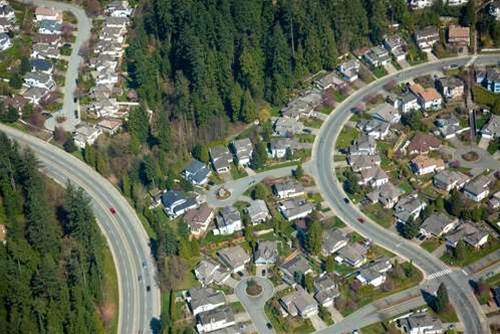The federal government is relying on limited and dated evidence to justify new rules that would set “quality” standards for telecommunications infrastructure deployed in new housing estates.

iTnews revealed in February that the government wants to prevent “poor quality networks” being rolled out by small private operators in new housing estates.
New home owners should expect a good network connection from day one, the government argued. It wants to protect NBN – and taxpayers – from the cost of overbuilding substandard pockets of internet infrastructure.
However, to date it has presented no evidence the problem is either current or widespread.
A small cache of evidence that forms the basis for the proposed rules – obtained by iTnews under freedom of information – reveals only a handful of estates with alleged issues. All pre-date the NBN’s existence.
While the proposed rules remain under consideration by the Department of Communications, questions have been raised about whether the low number of instances of quality issues necessitated hard rules such as a new carrier license condition to guarantee network quality.
The evidence
The department's case for the “quality” rules – as was highlighted briefly in a consultation paper issued just before Christmas 2015 – consists of letters and emails from new housing residents to their local members and the Communications Minister about poor broadband outcomes.
Those outcomes include allegations of “poor delivery of services in … developments, the lack of choice of [retail service providers] over the network, and pricing”.
The small cache of complaints obtained under FoI, which date back to March 2013, allege problems in estates where fibre networks were built and operated by Clublinks and Pivit Networks.
The correspondence relating to Clublinks refers to fibre networks in two neighbouring golf estates – Sandarra and Sandhurst – which are about 37km from Melbourne’s CBD.
The cache also concerns two Pivit networks at Kelvin Grove Urban Village in Queensland, and Little Bay in NSW.
Residents in the Clublinks-serviced estates complained about the quality of service they received and the lack of choice of RSPs. They have been seeking intervention for a number of years.
Several residents sought help from their local members to be fast-tracked onto the NBN as a way to escape.
Those in Pivit estates similarly complained about the lack of retail options.
“Our broadband is controlled and monopolised by the ISP Pivit. We have no other option, regardless of the cost and quality of their service,” one resident of Little Bay wrote.
A lengthy submission by a Kelvin Grove strata manager late last year similarly highlighted the lack of RSP choice available to residents.
A third estate – Port Macquarie’s Oxley Park – also features in the cache of documents, however there is no evidence issues in the estate persist to this day.
Early stages of the development were awarded to a local private fibre builder that ran into issues. iTnews understands the fibre was replaced by Telstra copper in stages one to three, and NBN put fibre into the remaining stages (four to six).
A difficult reality
There are several potential disconnects between the new “quality” rules proposed by the Department of Communications and the evidence that the rules are needed.
Firstly, the proposed new rules do not help residents in existing problem estates.
At best, they appear aimed at preventing a repeat situation where new estates become monopolised pockets of fixed-line telecommunications, and where the only alternative for residents is to use mobile internet or hope the NBN comes in and overbuilds.
Secondly, the scale of the problem the proposed “quality” rules address is unclear.
The estates cited in the FoI evidence mostly involve networks constructed between 2006 and 2009.
Today, a company wanting to build and run a “superfast” network in an estate can’t operate as a monopoly due to an ACCC rule, known as the local bitstream access service (LBAS), which forces such networks built from 2011 to be open to retail competition.
Industry sources say, however, that it is still possible for a network builder to cut corners in the physical quality of the network they roll out (even if doing so would be somewhat counterproductive to their future profitability).
Though network builders in the NBN-era are subject to a range of guidelines for deployments, there are no hard and fast network design specifications they have to meet. The government is proposing to change this by forcing network builders to meet “minimum standards” and to have their work independently certified.
The present regulatory framework makes it possible to win the right to build a network in a new housing estate, and then deploy a substandard network - but not monopolise retail services that run on top of that network.
Imaginations run wild
The question that many in the industry are asking is whether this situation occurs often enough to warrant regulation.
Greenfield Fibre Operators of Australia (GFOA) chair Michael Sparksman does not believe it does.
He argues the proposed rules are designed to alleviate "potential" rather than actual problems.
"The few complaints about Pivit and Clublinks concern their FTTP networks that were built many years before the NBN," Sparksman told iTnews.
"At that time they were state-of-the-art broadband networks, running as monopoly retail services, because retail providers were not willing to interconnect with them.
"The wholesale operators had no choice but to also be the retailer, in order to provide superfast broadband and voice services, just as Telstra Velocity Estates only provided Telstra retail services and BigPond Broadband."
Sparksman said "no reputable developer" today would choose this model, arguing they now insisted on networks that were "wholesale only" and which offered open, non-discriminatory access to all RSPs.
He noted that the complaints obtained by iTnews under FoI "concern two carriers that are not open access carriers".
The complaints did not implicate the likes of "OPENetworks, CNT Corp, LBN Co, Real World Networks, Opticomm and NBN Co who are actively building the vast majority of new broadband networks in Australia," he said.
In addition, Sparksman noted that most of the complaints being used to justify rules about network quality did not actually describe network quality issues.
"The complaints were largely about the lack of alternative retailers connected to the networks, so end users did not have a choice of provider, product, price and terms of service," he said.
"The complaints were not about the standard or quality of service or availability of service or whether the networks were badly designed, operated or maintained or were otherwise faulty.
"In other words, the department is exercising its vivid imagination and creating costly and difficult [new] regulation for carriers to address problems that do not even exist."
Other industry sources canvassed by iTnews indicated that poor quality builds were still an issue, albeit a declining one.
“It’s still occurring but it’s becoming less and less frequent,” one said. “I think the industry is shaking out.”
A Department of Communications spokesperson told iTnews it was not just "the number of complaints that is important but also the impact on consumers’ lives."
"The nature of the complaints released demonstrate there can be issues in servicing new developments and that when this occurs, there are real problems for consumers," a department spokesperson said.
"With around 140,000 new premises constructed each year in Australia, a significant number of consumers could be impacted if poor infrastructure and services are provided.
"It can also be difficult, expensive and time-consuming to provide a better outcome once a problem emerges. The carrier licence conditions are a way of mitigating these risks."
Resident relief
However, the proposed rules don't help residents in the handful of estates already experiencing problems, particularly if those estates have been declared by the government as being “adequately served” by their existing infrastructure.
While residents in small monopoly estates may hold out hope of being rescued by NBN overbuild, it seems more likely they could see change via an ACCC proposal under debate.
The ACCC wants to take the LBAS rules – which force newer networks to be open access – and apply them to networks built pre-2011.
The proposal specifically targets vertically-integrated, “small scale FTTP providers in greenfield developments or MDUs,” according to a draft decision.
The ACCC noted that “vertically-integrated providers not subject to wholesale access regulation (typically in greenfields areas)” could be prone to offering “less competitive” prices for residential internet services.
Both Clublinks and Pivit – whose networks feature in the FoI evidence – responded to the ACCC draft decision at the end of last year. Only Clublinks’ response is public.
Clublinks said it had “in the order of 1600 very happy customers who are receiving high speed internet and VoIP telephony services at competitive prices”.
It argued that a mandated opening of its network to retailers would see it lose money and forced to cease operating. It also claimed no RSP had ever wanted to service its estates.
“No other service provider has ever contacted us to request access to our network,” Clublinks manager Brian Mollet said.
“It appears the opportunity for our competitors to provide services to a loyal customer base of less than 2000 users is not attractive enough for our competitors given the upfront cost they would incur and the fact we are already competitively priced in the market.”
While RSPs may not have contacted Clublinks, residents have been advocating for retail choice for a number of years.
The FoI evidence claims residents had “voted to allow competition into the estate” at a July 2014 AGM, only to be allegedly rebuffed. There is also an online petition calling for competition to be forced on the estate.
Keeping quality in industry hands
GFOA's Michael Sparksman said network quality concerns should be addressed via industry codes rather than carrier license conditions.
A code is one of the formal options on the Department of Communications' consultation table.
"Codes for technical telecommunications matters are normally set by all carriers and retail service providers through industry wide independent consultations, forums and determinations convened by highly respected independent expert bodies, such as Comms Alliance," he said.
"They include input from specialist telecommunications advisers, engineers, lawyers and consultants and are genuinely open and fair.
"When the final technical standards are embodied in codes that are adopted as industry codes under the Telecommunications Act, those codes are then enforceable against all carriers as if the codes were conditions on the carrier licences."




_(20).jpg&h=140&w=231&c=1&s=0)





 iTnews Executive Retreat - Security Leaders Edition
iTnews Executive Retreat - Security Leaders Edition












_(1).jpg&h=140&w=231&c=1&s=0)



